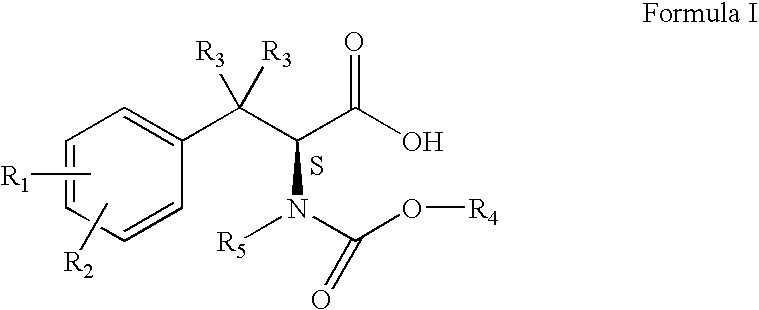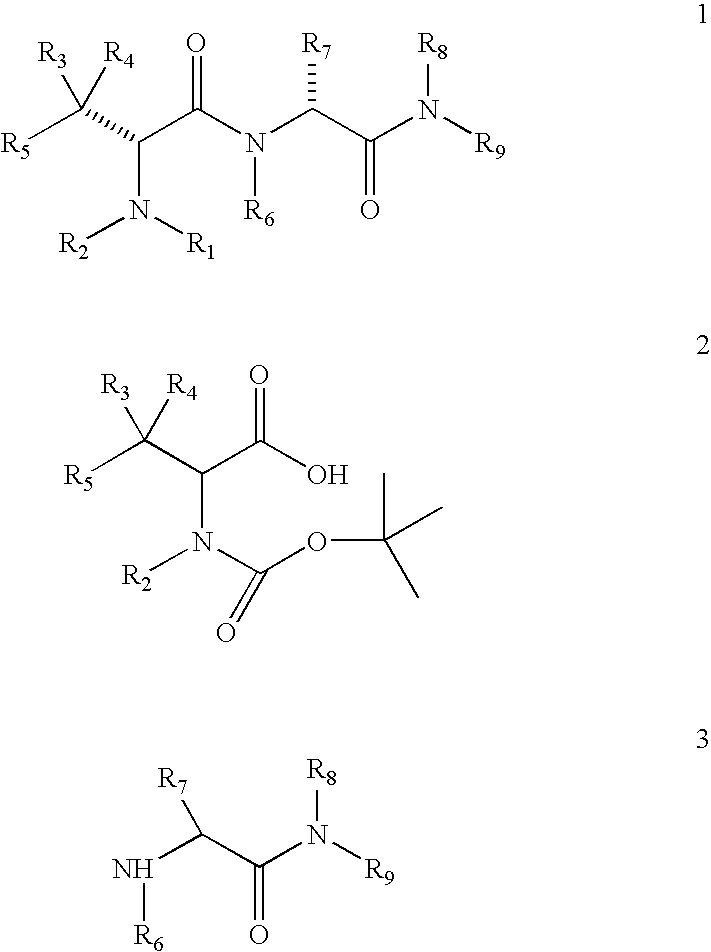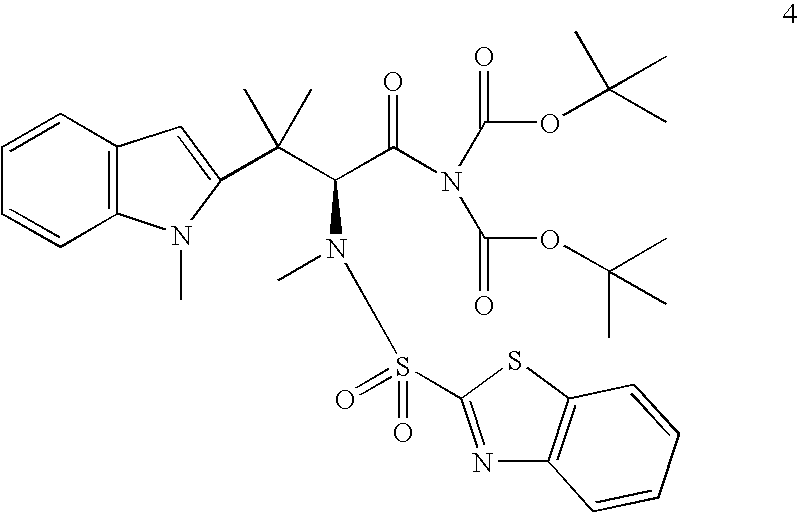Process for the synthesis of intermediates useful for the synthesis of tubulin inhibitors
- Summary
- Abstract
- Description
- Claims
- Application Information
AI Technical Summary
Benefits of technology
Problems solved by technology
Method used
Image
Examples
example 1
2-Methyl-2-phenylpropanenitrile
[0150]To a solution of potassium tert-butoxide (500 g, 4.46 mol) in tetrahydrofuran (2500 mL) at −30° C. is added a solution of methyl iodide (270 mL, 5.35 mol) and phenylacetonitrile (209 g, 1.78 mol) in tetrahydrofuran (1000 mL) under N2 over a period of 1 hour. The cooling bath is removed and the reaction mixture is allowed to warm to ambient temperature and stirred for 2 hours. The reaction is then quenched by the addition of water (1000 mL) and tetrahydrofuran is removed under vacuum. The organic layer is separated and the remaining aqueous phase extracted with EtOAc (3×200 mL). The combined organic layers are washed with water (300 mL), brine (300 mL), and dried over Na2SO4. The organic extracts are filtered and concentrated under vacuum to give 2-methyl-2-phenylpropionitrile as an oil (253 g, 98% yield, 99.4% by HPLC area).
example 2
2-Methyl-2-phenylpropanal
[0151]To a solution of 2-methyl-2-phenylpropanenitrile (290 g, 2.00 mol) in hexane (2000 mL) at 0° C. under N2 is added diisobutylaluminum hydride (DIBAL-H) (2600 mL, 1M in hexane) over a period of 80 minutes. The reaction mixture is stirred at 6-14° C. for 15 minutes, then allowed to warm to room temperature and stirred for 4 hours. The reaction mixture is cooled to 0° C. and H2O (50 mL) is added slowly during 1 hour. Aqueous HCl (900 mL, 15%) is then added slowly to maintain a gentle reflux. The reaction mixture is stirred for 17 hours and the organic phase is separated. The aqueous layer is extracted with ethyl acetate (400 mL) and the combined organic layers are washed with water (300 mL), brine (300 mL) and dried over Na2SO4. The organic extracts are filtered and concentrated to give 2-methyl-2-phenylpropanal as an oil (275 g, 92.8% yield, 98.2% by HPLC area).
example 3
3-Methyl-2-(methylamino)-3-phenylbutanenitrile
[0152]To a solution of potassium cyanide (103 g, 1.56 mol) and methylamine hydrochloride (106 g, 1.56 mol) in water (1000 mL) is added a solution of 2-methyl-2-phenylpropanal (222 g, 1.50 mol) in methanol (1000 mL) over a period of 30 minutes. An ice-water bath is used occasionally to maintain the reaction temperature between 20-25° C. The mixture is stirred at room temperature for 25 hours. Water (2000 mL) is then added and the reaction mixture is extracted with CH2Cl2 (3×800 mL). The combined organic extracts are washed with brine (500 mL) and dried over Na2SO4. The organic extracts are filtered and concentrated to give 3-methyl-2-(methylamino)-3-phenylbutanenitrile as an oil (274 g, 95% yield, 76.6% by HPLC area, NMR (>95%)). Evidence of decomposition on the HPLC / GC column is noted.
PUM
| Property | Measurement | Unit |
|---|---|---|
| Acidity | aaaaa | aaaaa |
Abstract
Description
Claims
Application Information
 Login to View More
Login to View More - R&D
- Intellectual Property
- Life Sciences
- Materials
- Tech Scout
- Unparalleled Data Quality
- Higher Quality Content
- 60% Fewer Hallucinations
Browse by: Latest US Patents, China's latest patents, Technical Efficacy Thesaurus, Application Domain, Technology Topic, Popular Technical Reports.
© 2025 PatSnap. All rights reserved.Legal|Privacy policy|Modern Slavery Act Transparency Statement|Sitemap|About US| Contact US: help@patsnap.com



